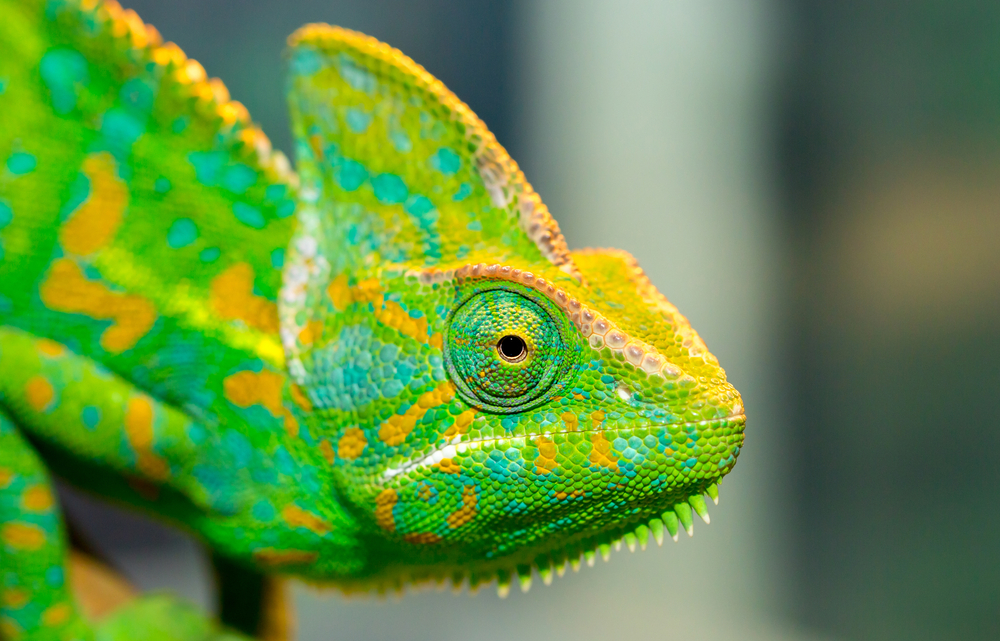- About Ajou
- Admission
- Academics
- Research
-
International
International
- Campus Life
-
News and Event
News and Event
-
AUT
AUT
Major Research Result
NEW Capillary-Controlled Robotic Fins for Ultralow Power Displays
- 2023-12-05
- 1428
Researchers develop bio-inspired capillary-controlled robotic fins for creating displays that consume a fraction of the power used by traditional displays
Morphing appendages allow natural creatures to change their skin color. However, achieving such functionality using traditional light-emitting diodes for soft robots is quite energy-expensive. Now, drawing inspiration from nature, researchers have developed innovative capillary-controlled robotic flapping fins which can be used to fabricate multipixel, ultralow power displays, paving the way for a sustainable future.

Creatures like chameleons use morphing appendages to change color. Inspired by this phenomenon, innovative flap-phores can be used to develop multipixel displays that consume thousand times less power than traditional light-emitting diodes.
Many creatures in nature are known to have fascinating morphing skins with switchable functions. Chameleons, for instance, masterfully camouflage themselves using pixelated skin appendages. These morphing appendages offer them several advantages, including the ability to change color, temperature, texture, and adhesion properties for camouflage or temperature regulation. Translating these capabilities via soft robotics to curvilinear and soft machines using traditional light-emitting diodes requires considerably higher amount of energy, besides making these devices bulky. Natural creatures, on the other hand, use the flow of liquids to control these appendages, requiring them to expend only a small amount of power.
Now, however, drawing inspiration from the capillary bundling of the hair of otters and beetles, an international team of researchers led by Assistant Professor Jonghyun Ha from the Department of Mechanical Engineering at Ajou University, Korea, has developed innovative ultralow power capillary-controlled robotic flapping fins, named “flap4.” Elaborating on the inspiration behind this study, Dr. Ha says, “I was studying how surface tension can deform flexible structures when I had a simple yet intriguing thought. I wondered that if we look at these structures from above, they can be used to change texture or color.” This study was published in Volume 9, Issue 26 of the journal Science Advances on June 30, 2023.
The flap4 cells created by the team operate on the principle of capillarity, where a liquid rises or falls in very narrow passages, called capillaries, due to surface tension. The mechanism behind this is similar to that of a sponge with several narrow pores acting as capillaries, allowing it to absorb a large amount of water. Flap4 cells consist of ultrasoft fins fixed to the base of wet cells, which have pores connected to a liquid control system. By controlling the flow rate of the liquid through the pores, capillary action can be used to bend the fin to either narrow or wide side. This innovation allowed the team to develop a soft multipixel display by using each flap4 cell as an individual pixel. Moreover, they also developed an infrared signaling system by using liquids of different temperatures in the flap4 cells.
Stressing the importance of this development, Dr. Ha says, “This innovative technology can enable the development of displays that consume 1000-fold less energy than traditional light-emitting diodes for a variety of applications. They can be used to add critical functionalities to soft robots through dynamic skins and even for big signage displays, with substantial power savings.”
In summary, this study not only serves as a leap forward in soft robotics but also as an environment-friendly alternative to traditional display technologies. With significantly less energy consumption and reduced electronic waste generation, it paves the way for a sustainable future where technology advancements adapt to the needs of the people and the planet!
Reference
Authors: | Jonghyun Ha1,2, Yun Seong Kim1,3, Chengzhang Li1, Jonghyun Hwang1, Sze Chai Leung1, Ryan Siu1, and Sameh Tawfick1,3,* |
Title of original paper: | Polymorphic display and texture integrated systems controlled by capillarity |
Journal: | Science Advances |
DOI: | |
Affiliations: | 1Department of Mechanical Science and Engineering, University of Illinois 2Department of Mechanical Engineering, Ajou University 3The Beckman Institute for Advanced Science and Technology, University of Illinois |
*Corresponding author’s email: tawfick@illinois.edu
About Ajou University
Founded in 1973, Ajou University has quickly grown to become one of the top universities in the Republic of Korea. With over 15,000 students and 50 research centers in diverse fields, Ajou University partakes in the largest national research and graduate education project funded by the Korean Ministry of Education. In line with its recently reformed vision, Ajou University’s goal is to change society by connecting minds and carrying out high-impact research to improve the welfare of people in and outside Korea.
Website: https://www.ajou.ac.kr/en/index.do
About the author
Jonghyun Ha is currently an Assistant Professor at Ajou University. He earned his B.S. from Chungnam National University in 2012 and Ph.D. from Seoul National University in 2018. He was a postdoc at the University of Illinois at Urbana-Champaign until 2021, after which he joined the Samsung Advanced Institute of Technology. By 2022, he transitioned to his current role at Ajou University. His research interests include microfluidics, porous flows, and microscale fluid-solid interactions. He can be reached by email at: hajh@ajou.ac.kr
